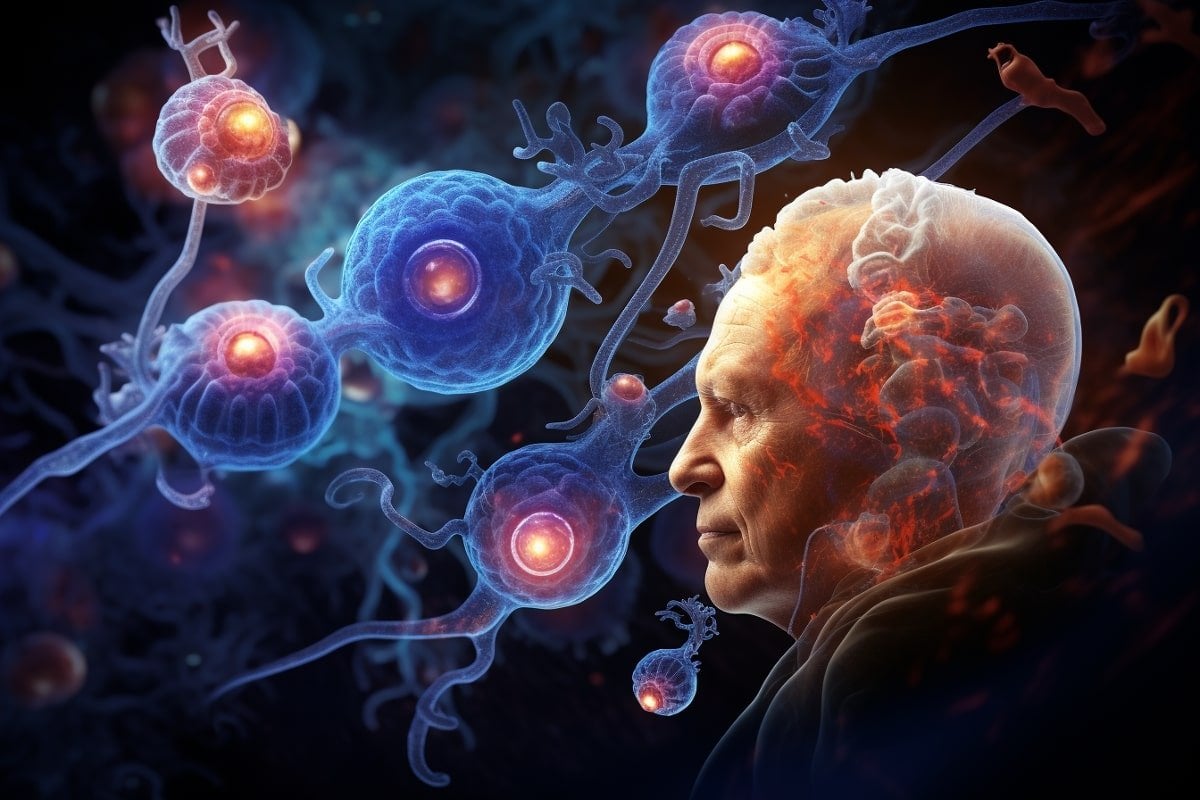Summary: Alzheimer’s disease, a prevalent neurodegenerative condition, could have its roots in embryonic development.
The team grew cortical spheres, akin to human embryonic brains, from CRISPR-edited stem cells harboring familial Alzheimer’s disease (fAD) mutations. These mutated spheres developed abnormally, being larger and housing fewer mature neurons.
The study could allow the understanding and addressing of Alzheimer’s at much earlier stages, opening pathways for more effective treatments.
Key Facts:
- The study found that Alzheimer’s-associated gene mutations disrupt normal brain development in cortical spheres, which resemble human embryonic brains.
- Mutated cortical spheres showed signs of abnormal development – they were larger and contained less mature and functioning neurons than normal.
- Alzheimer’s disease might originate during embryonic development, long before symptoms manifest, indicating a need for tailored early-stage therapies.
Source: International Society for Stem Cell Research
Alzheimer’s disease (AD) mainly affects the older population. Recent research found early disease signs in cell culture models of early human brain development, raising the possibility that the disease has its origins much earlier in life, possibly during embryogenesis – the formation and development of an embryo.
Alzheimer’s disease is a highly prevalent, debilitating, and potentially fatal neurodegenerative disease with limited treatment options. Patients are typically diagnosed at an advanced disease stage, limiting the possibilities for early therapeutic intervention.

Although for most patients the disease cause is unknown and likely multifactorial, some patients have known mutations in genes affecting neuronal function and survival, leading to familial forms of AD.
Abnormal brain structures have been seen in children and young adults with familial AD years before the onset of AD symptoms, suggesting that the disease may have its origins much earlier in life.
Jenny Hsieh and colleagues from the University of Texas at San Antonio, USA now asked how AD-associated gene mutations affect early human brain development.
The researchers grew so-called cortical spheres, which are small clumps of cells resembling human embryonic brains, from CRISPR-edited stem cell lines harboring fAD mutations.
Intriguingly, AD mutations interfered with normal development of these cortical spheres, whereby mutant spheres were larger and contained less mature and functioning neurons compared to cortical spheres without the mutations.
By pinpointing the underlying molecular pathways, the researchers could identify points of intervention to restore normal brain development in their cortical sphere model.
Interestingly different types of AD-associated mutations caused distinct developmental abnormalities in the cortical spheres, highlighting the need for tailoring therapies individually for each patient.
This work, published in the recent issue of Stem Cell Reports, paves the way for studying AD in its early stages with the possibility of identifying more effective or preventive treatments for AD in a patient-specific fashion.
About this genetics and Alzheimer’s disease research news
Author: Kym Kilbourne
Source: International Society for Stem Cell Research
Contact: Kym Kilbourne – International Society for Stem Cell Research
Image: The image is credited to Neuroscience News
Original Research: Open access.
“Familial Alzheimer’s disease associated PSEN1 mutations affect neurodevelopment through increased Notch signaling” by Jenny Hsieh et al. Stem Cell Reports
Abstract
Familial Alzheimer’s disease associated PSEN1 mutations affect neurodevelopment through increased Notch signaling
Highlights
- PSEN1 L435F affects cortical spheroid growth and morphology
- PSEN1 L435F increases cortical progenitors and reduces neuron differentiation
- Specific Notch1 inhibition rescues cellular phenotypes
- PSEN1 L435F increases Aβ42/40 and Aβ43/40 ratios
Summary
Alzheimer’s disease (AD) is the most common neurodegenerative disorder, but its root cause may lie in neurodevelopment. PSEN1 mutations cause the majority of familial AD, potentially by disrupting proper Notch signaling, causing early unnoticed cellular changes that affect later AD progression.
While rodent models are useful for modeling later stages of AD, human induced pluripotent stem cell-derived cortical spheroids (hCSs) allow access to studying the human cortex at the cellular level over the course of development.
Here, we show that the PSEN1 L435F heterozygous mutation affects hCS development, increasing size, increasing progenitors, and decreasing post-mitotic neurons as a result of increased Notch target gene expression during early hCS development. We also show altered Aβ expression and neuronal activity at later hCS stages.
These results contrast previous findings, showing how individual PSEN1 mutations may differentially affect neurodevelopment and may give insight into fAD progression to provide earlier time points for more effective treatments.







